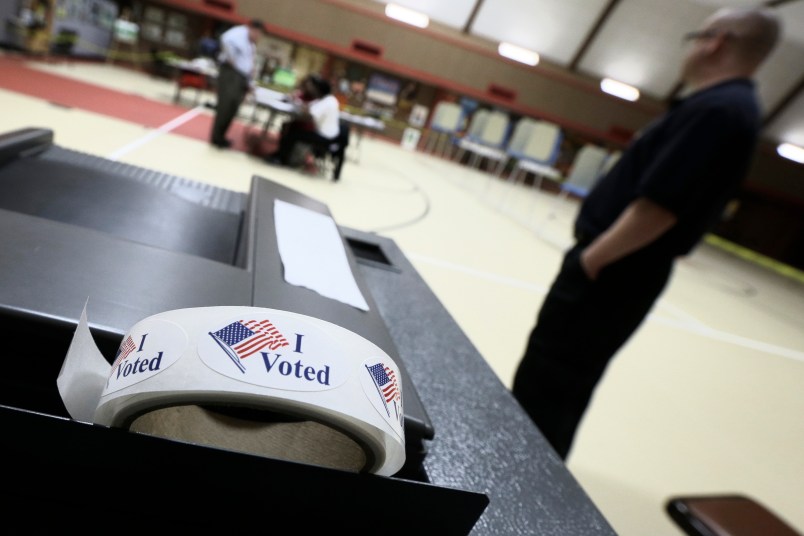WASHINGTON (AP) — More than half the states to hold primary elections so far have seen record-low turnouts, according to a nonpartisan survey of voter rolls released Monday. That perhaps is a sign of widespread apathy within both political parties ahead of November’s midterm elections.
Of the almost 123 million voters who were eligible to cast ballots in primaries, only 18 million have done so, and states with same-day voter registration actually saw their turnout rates drop, according to the Center for the Study of the American Electorate. Despite heavy campaign spending that is poised to make history, 15 of the 25 states that have held statewide primary elections each reported a record low percentage of voters who cast ballots.
The low turnout comes amid high stakes. Republicans are driving for the six-seat gain required to control the Senate.
Nonetheless, Democrats saw a 29 percent decline from 2010’s primaries, the 11th consecutive midterm elections to see a drop in participation.
Republicans posted a 15 percent decline in participation from 2010. But their rate was closer to historical norms after tea party enthusiasm in 2010 led to a turnout spike.
The two parties’ combined participation rate this year — 14.8 percent — is less than half of the most recent high of 32 percent, posted in 1966.
In all, the numbers suggest the campaigns, party committees and independent super PACs are spending potentially record sums to reach fewer voters than ever before. With money washing through the system at staggering rates, each vote’s value is skyrocketing compared to previous cost-per-ballot figures.
A major contributing factor is congressional redistricting that followed the 2010 census, the report suggests. Lawmakers drew district lines to favor one party, thus leaving the minority party unmotivated to show up at the polls to pick a nominee that was all-but-certain to lose in November.
“Organized interests representing the views of only 3 to 4 percent of the electorate can win those primaries and propel one of their own to office,” the report’s author Curtis Gans wrote. “The result can be seen in how the tea party has become a dominant player in Republican congressional and state legislative politics. But the danger exists for both parties.”
That intra-party fighting among Republicans, however, produced a record-high for GOP turnout in specific primaries. In Oklahoma, the contest between tea party-backed T.W. Shannon and second-term Rep. James Lankford drove primary turnout to a record level of almost 10 percent of those eligible to vote in the primary for that open seat.
And in Mississippi, where tea party favorite Chris McDaniel attempted to deny six-term Sen. Thad Cochran another term, turnout reached 17 percent for their runoff.
___
Follow Philip Elliott on Twitter: http://www.twitter.com/philip_elliott
Copyright 2014 The Associated Press. All rights reserved. This material may not be published, broadcast, rewritten or redistributed.







Have Republicans figured out how to make sure Blacks don’t get to vote in Mississippi, in November?
“Organized interests representing the views of only 3 to 4 percent of the electorate can win those primaries and propel one of their own to office.”
On the bright side, organized interests representing only 3% of the electorate are slightly more representative than the aristocracy was in pre-revolutionary France.
Uh, oh.
And this is why we can’t have nice things in this country.
Here’s the question - how many of these primaries were hotly contested on each side? Case in point: Kentucky Senate was a much hotter primary on the R side - same with Georgia Senate. It’s one thing to note that Democratic primary participation has declined for 29 straight midterms. It would be another to point out that several of those midterms (1998 and 2006 come immediately to mind) saw the Democrats add seats in the General. I’ll start looking at polls post Labor Day.